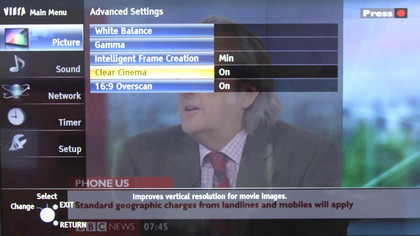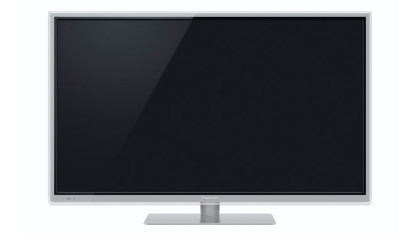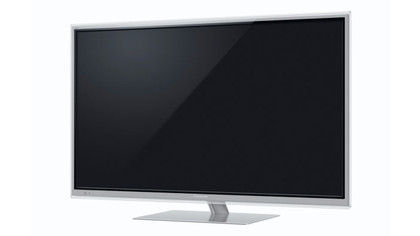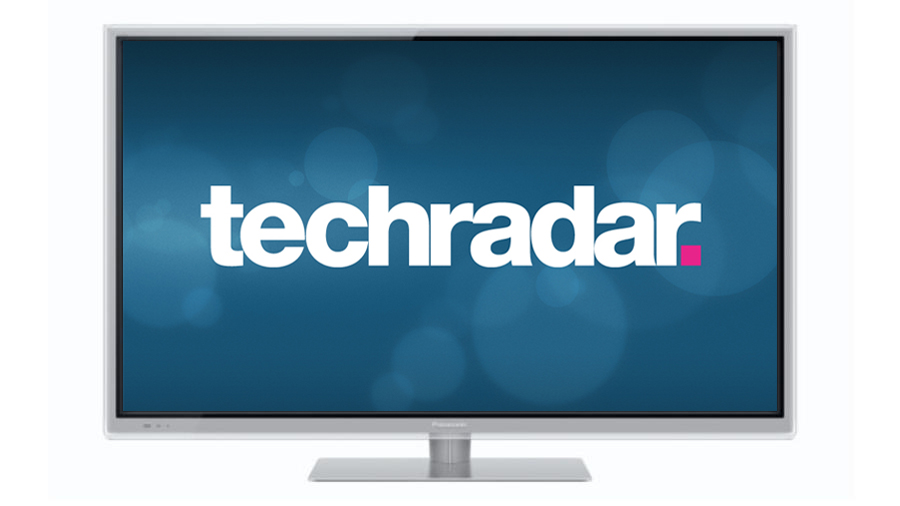Why you can trust TechRadar

The Panasonic TX-L42ET50B doesn't initially show itself as a TV aimed at those after a custom-fit picture.
Its picture menus seem to offer nothing more than the usual tweaks for brightness and contrast plus some rudimentary noise reduction, although if you look hard enough there's plenty of opportunity to go way beyond its default Dynamic/Normal/Cinema/True Cinema viewing modes (why no 'game' mode?).
Hidden on a second screen is a shortcut to Advanced Settings, which leads to fine tweaks for white balance and gamma levels, as well as access to arguably this set's most important picture processing weaponry - Intelligent Frame Creation and Clear Cinema.
Intelligent Frame Creation is a frame interpolation feature than can be set to various strengths. Clear Cinema is an 800Hz anti-blur circuitry that generates 200 frames per second, in conjunction with some dynamic backlight scanning.
Used on Freeview HD, the former was best kept on minimum strength to avoid flicker and mosquito noise around moving objects, and the latter is a mild effect indeed.

For 3D, picture settings are limited to simple detection and messaging options, with no exacting control on offer.
We start at the bottom of the quality food chain with some footage streamed through iConcerts on the Viera Connect interface. Morrissey performing on Later... with Jools Holland via iConcerts is strictly standard definition, yet stable and clean.
A blast of the Malaysian F1 Grand Prix via a Virgin Media TiVo box looks clean and colourful, but the lack of convincing black (it appears as a dark blue) is becoming obvious, as is some worrying light leakage from a cluster of LEDs in the bottom-right-hand corner of the screen.
Most alarmingly is a tight viewing angle on this, the biggest version yet of a usually reliable IPS LCD panel. Contrast and colour drain if watched from the wings.
Those light leakage problems are especially obvious on movies with black bars, so it's a continual presence throughout Tinker, Tailor, Soldier, Spy on Blu-ray.
So too is a little background picture noise, although the image underneath is impressively sharp.

The Panasonic TX-L42ET50B's picture is colourful, too, but there's not enough contrast to give bold tones, and convincing blacks and shadow detailing are the victims.
An optional feature for Blu-ray discs is 24p Smooth Film, but on any of its four strengths, the effect is mild. Intelligent Frame Creation and Clear Cinema aren't available for Blu-ray. Thankfully, the Panasonic TX-L42ET50B doesn't suffer from native motion blur.
Converting those spy shenanigans into 3D immediately kills the colour as it ups the contrast, with the overly cool results looking slightly befuddled and lacking much consistency, although we occasionally spotted some crisp and clear depth effects.
Tahiti Wave on 3D Blu-ray is the real deal on the Panasonic TX-L42ET50B. The level of detail is very high, and there's little evidence of crosstalk or ghosted images, but as with last year's crop of 3D TVs, we did notice some flickering that becomes more obvious the more ambient light is in the room.
If you can resist the temptation to crack open a window in bright sunlight, the Panasonic TX-L42ET50B performs very well with 3D, although it's perhaps a tad too small for true immersion.
Jamie is a freelance tech, travel and space journalist based in the UK. He’s been writing regularly for Techradar since it was launched in 2008 and also writes regularly for Forbes, The Telegraph, the South China Morning Post, Sky & Telescope and the Sky At Night magazine as well as other Future titles T3, Digital Camera World, All About Space and Space.com. He also edits two of his own websites, TravGear.com and WhenIsTheNextEclipse.com that reflect his obsession with travel gear and solar eclipse travel. He is the author of A Stargazing Program For Beginners (Springer, 2015),

